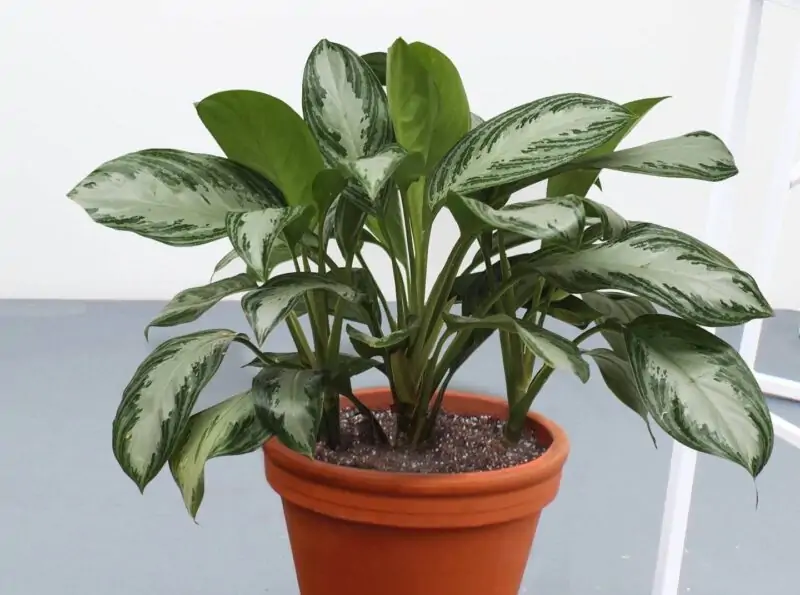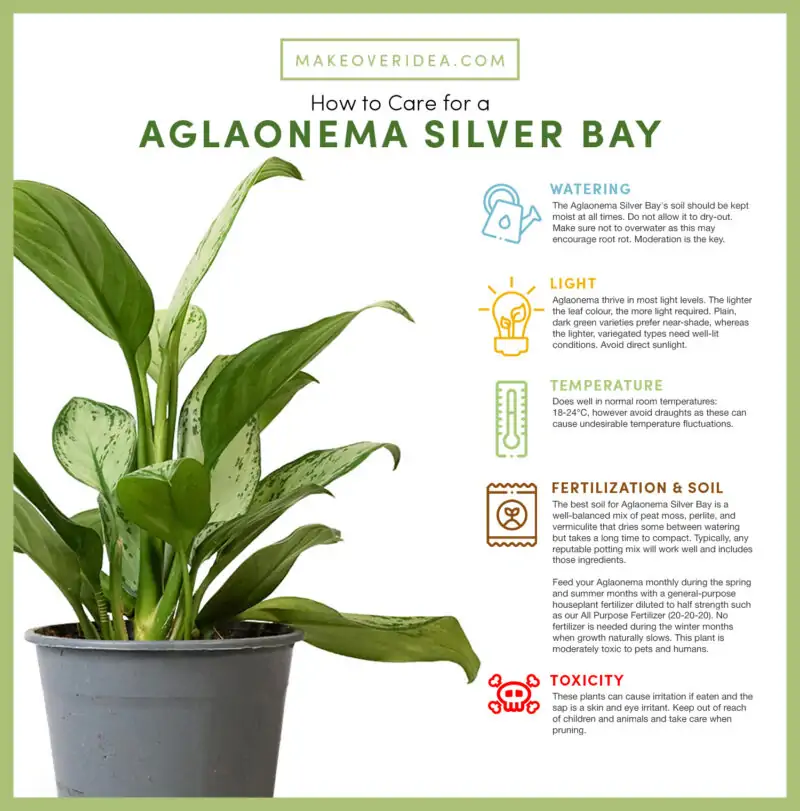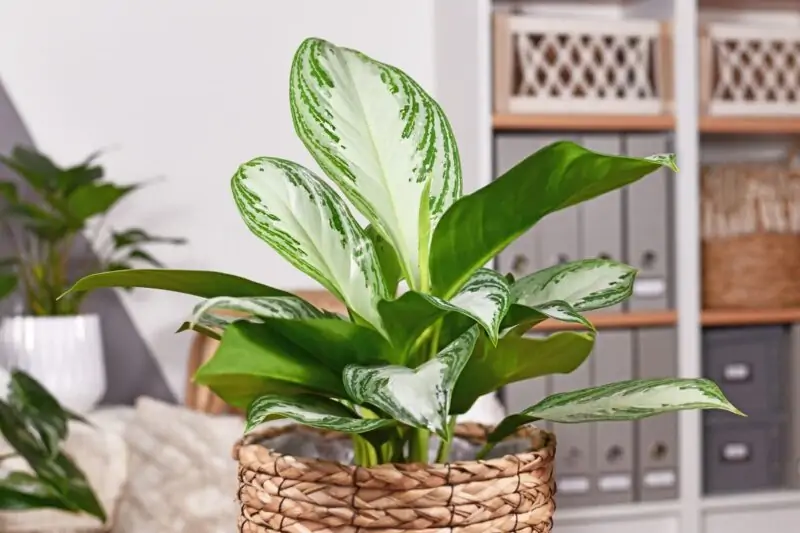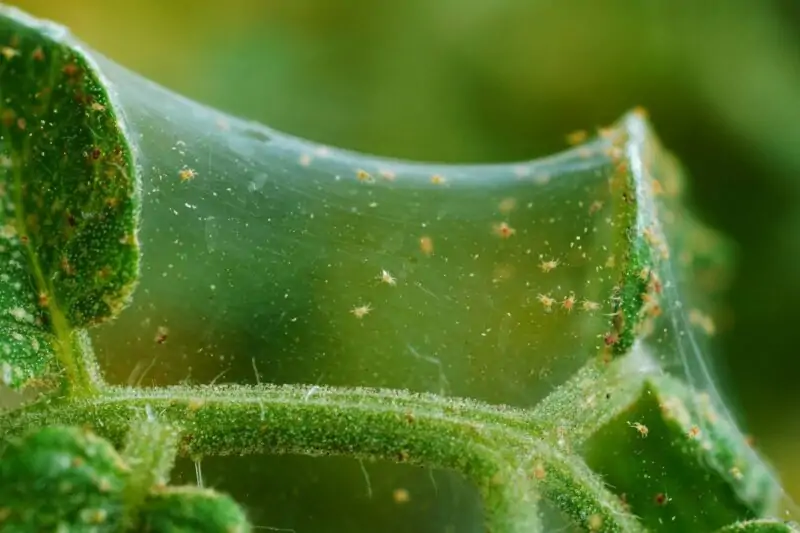Aglaonema Silver Bay Care: Tips and Tricks for Your Chinese Evergreen

Are you looking for a low-maintenance plant that can add beauty to your home or office? Then choose Aglaonema Silver Bay: care for this plant won’t require you to invest a lot of effort. Aglaonemas are well-known for requiring minimal attention which makes them a perfect choice even if you have a busy schedule.
In this article, we will provide comprehensive information on how to grow and maintain Aglaonema plants successfully. We’ll cover everything from optimal growing conditions such as light levels and humidity requirements to soil types, fertilizers, propagation techniques, and common problems faced by these plants along with their solutions.
Understanding Aglaonema Silver Bay Care
What is Aglaonema Silver Bay?
Any care and propagation guide requires a brief description of the plant that’s being grown. Aglaonema Silver Bay (also known as Chinese Evergreen) belongs to the Araceae family of evergreens originating from Southeast Asia’s tropical rainforests. Easy to care for, it has broad variegated leaves with bright silvery stripes running down its center that make it stand out in any room or garden setting.
Characteristics of Silver Bay Chinese Evergreens:
The Aglaonema Silver Bay plant grows up to 1-3 feet tall indoors but can reach higher when grown outside under ideal conditions. Its foliage comprises oval dark-green leaves decorated with distinctive greyish-white variegation patterns resembling artists’ brushstrokes. The combination of light green leaves and distinctive stripes makes Chinese Evergreens so easy to recognize that anyone who sees them only once will remember them forever.
Very beautiful and extremely appealing, Aglaonema can tolerate low light conditions, which makes it an ideal choice for your home.
Ideal Growing Conditions:
To keep your Aglaonema thriving well throughout seasons without much fussing around requires three critical factors: consistent lighting conditions, adequate water supply, and proper fertilization & maintenance routine – all of which we’ll discuss next!

Light and Temperature Conditions for Chinese Evergreen
Light level intensity plays a crucial role in determining healthy growth rates in most houseplant species, including our very own beloved Chinese Evergreen Plant!
Ideal Light Levels:
The Aglaonema Silver Bay plant is a shade-loving species that prefers bright, indirect light. What’s more, this plant can tolerate low-light environments, making it ideal for indoor settings or darker corners of your home.
Temperature Range and Tolerance:
Aglaonema Silver Bay plants thrive in temperatures between 60-85°F (16-29°C), with the optimal range being 70-75°F (21-24°C). They are relatively tolerant to temperature fluctuations but prefer consistent warmth throughout seasons.
Adjusting Light And Temperature For Healthy Growth:
If you find your Aglaonema’s leaves turning yellow or wilting frequently, this could mean that the plant doesn’t get proper lighting or temperature conditions. Try moving them closer to a window if they’re not getting enough sunlight during the day; alternatively, move them away from direct sunlight if their leaves appear burnt out!
If your windows do not face the sun, you can also use artificial light sources like fluorescent lights for your new plant.
Watering And Humidity Requirements of Silver Bay Aglaonema
Water requirements vary depending on factors such as soil type & plant size/type, etc. However, this plant needs proper hydration levels that are absolutely crucial for its healthy growth rates.
Determining Water Frequency:
To determine the watering frequency for your Aglaonema Silver Bay plants, use either the finger-test method, where after sticking one finger inside the soil up to its first knuckle depth, check whether the moisture level feels moist, wet, or dry; or the drainage hole test, where you pour water into the pot’s bottom and observe how long it takes before the excess drains off thoroughly!
Signs Of Overwatering Or Underwatering:
Overwatered Silver Bays have mushy yellowish-brown roots, while underwatered ones develop brown or yellow leaf tips and crispy edges around margins, indicating insufficient water supply.
If you water this house plant too frequently, root rot might be a major issue. The only reliable way to deal with root rot is to cut the affected parts of the root, which will negatively affect the plant’s development. So, be sure never to overwater your plants of any variety as this is the easiest possible way to do them a lot of harm.
Ideal Humidity Levels And Methods To Maintain Them:
These tropical beauties require higher humidity levels than most other indoor plants, which means mist-spraying the foliage heavily every few days using purified or distilled room-temperature water, or placing a pebble tray filled with water underneath the pot to increase ambient moisture in the air around these plants.
Alternatively, you can also use a humidifier. Keep in mind, though, that ultrasonic humidifiers are not always the best choice as they can leave a thin film of mineral deposits on the leaves of your plants.

Care for Aglaonema Silver Bay: Soil and Fertilizer
Choosing The Right Soil Mix:
Aglaonema Silver Bay plant does well in well-draining soil that is rich in organic matter. A mixture of peat moss, perlite, and sand can help provide healthy root development by providing good drainage while keeping soils moist enough for healthy growth rates.
Essential Nutrients And Fertilizer Types:
Fertilizers containing balanced ratios of essential nutrients such as nitrogen (N), phosphorus (P), and potassium (K), along with minor trace elements, are required regularly throughout the growing season, especially during summer months when growth rates peak! Use liquid fertilizers every 2-3 weeks, diluted to half-strength of the recommended dosage according to the manufacturer’s label instructions!
Proper Fertilization Frequency and Techniques:
During spring, summer, and fall seasons, use slow-release granular fertilizer added to the soil mix before planting or transplanting into larger containers; alternatively, apply dilute liquid feeds every two to three weeks following package directions.
Growing Silver Bay Aglaonema: How to Repot and Maintain
Repotting at regular intervals ensures adequate aeration through the roots, which encourages faster and healthier plant growth. Here’s how you can maintain your Aglaonema easily –
When To Repot Your Aglaonema Silver Bay?
If you notice its roots have reached the bottom holes, it’s time to repot them. Make sure you don’t disturb any new leaf buds emerging from the base. But do this only during early to mid-Springtime when conditions are optimal and promote a good recovery rate without stressing these beauties too much.
Choosing The Right Pot And Soil:
Choose pots that allow extra space for future root expansion but are not so large that there’s excess moisture accumulation causing rot; add fresh, high-quality, nutrient-rich organic compost-like Miracle-Gro® Potting Mix™ into the pot hole until the halfway mark, then gently place the plant root-ball into it and fill the remaining space with soil mix up to the top.
Pruning And Grooming For Optimal Growth:
Aglaonema Silver Bay plants are relatively low maintenance; however, deadheading yellow leaves or pruning off overgrown stems every six months will stimulate healthy new growth rates while keeping them looking neat and tidy year-round!
How to Propagate Aglaonema Silver Bay
Propagating Aglaonema is an easy process that requires little time investment but can yield big rewards in terms of additional indoor landscape beauty! Here’s how you do it –
Propagation Techniques: Division And Stem Cuttings
The easiest method for propagating Aglaonema Silver Bay involves dividing mother plants by carefully separating them at the base where they emerge from the roots, then transplanting each half into separate containers filled with fresh potting mix. Alternatively, stem cuttings taken during spring or early summer seasons can be placed directly inside moist rooting medium (like peat moss or sphagnum moss) until rooted.
Preparing And Planting The Propagated Material:
Transplant each propagated seedling or cut into individual pots containing high-quality, well-draining compost-like Miracle-Gro® Potting Mix™, providing adequate moisture via light mist-spraying and placing under bright indirect lighting conditions, allowing enough humidity around the foliage area using a plastic cover until the roots establish themselves firmly.
Caring For New Aglaonema Silver Bay Plants
Newly planted baby Aglaonemas require slightly different care routines compared to mature ones. Water sparingly but frequently initially, ensuring not to cause rot or drown the young delicate root systems, which must be kept moist constantly at first before easing off once they are well-established.
Aglaonema Silver Bay: General Care Guide
Preventing problems early on helps keep your plant in excellent condition throughout its life cycle. Here’s what you should know –
Pests and Diseases Affecting Your Plant:

Aglaonema Silver Bay plants are pest and disease-resistant species, but they can suffer from spider mites or scale insect infestations if not kept in ideal conditions. Quickly treat them by wiping leaves with a damp cloth dipped in rubbing alcohol.
Addressing Nutrient Deficiencies:
Yellowing of foliage is generally indicative of nutrient deficiencies; adding fertilizers rich in NPK ratios along with trace elements in the recommended dosage according to package instructions can help correct these issues easily without much hassle!
Common Signs Of Stress And Solutions:
Leaf drooping or wilting could indicate either insufficient watering frequency or root rot – check the soil moisture level to ensure proper hydration levels, while repotting into fresh, high-quality organic potting mix should alleviate any underlying root rot issues!
FAQs (Q&A Format):
Here are some frequently asked questions about Aglaonema Silver Bay plant care:
Water requirements depend on multiple factors such as humidity, light intensity, and temperature. Use the finger-test method or drainage hole test, observing signs of overwatering or underwatering as indicated above for keeping your plant happy!
Yes! It’s one unique feature making it an ideal houseplant that does exceptionally well even when lighting conditions are suboptimal.
Yes, this beautiful tropical beauty is relatively easy to propagate using the division or cuttings methods mentioned earlier.
Yellow spots typically indicate fungal infections caused by excessive moisture around the foliage area, which encourages fungus or mold growth.
Typically, Aglaonema Silver Bay grows up to 36 inches tall indoors, depending on how much space is provided for its roots to grow.
Conclusion
Now you know almost everything about Aglaonema Silver Bay: care, maintenance, growing, watering, fertilizing, and propagation techniques. Follow the proper maintenance care routines mentioned here and you will easily ensure your Aglaonema thrives well throughout the seasons without much hassle! So go ahead and get one today, and enjoy watching it bloom into an evergreen wonder right before your eyes!